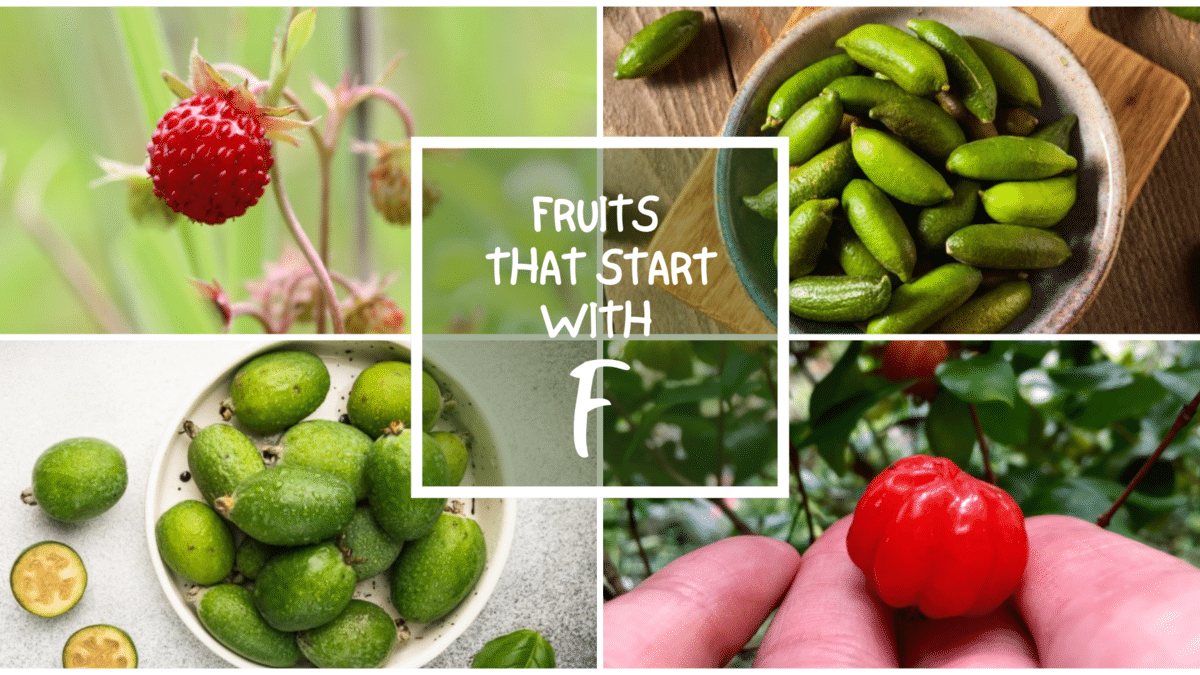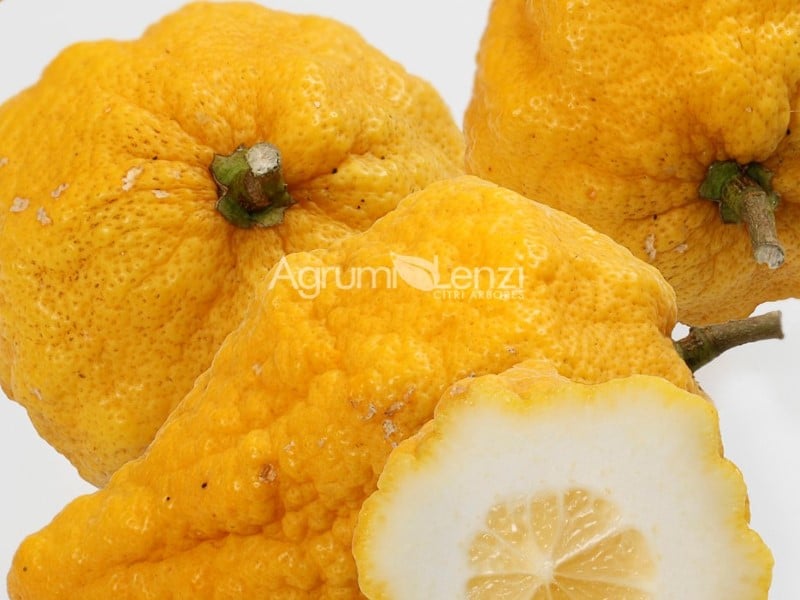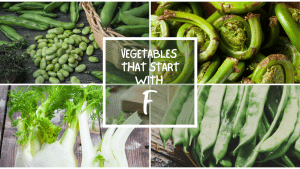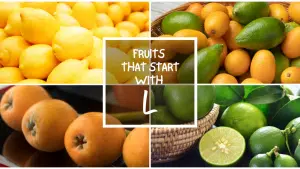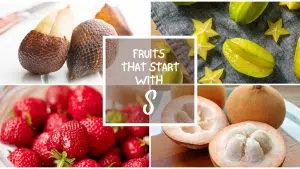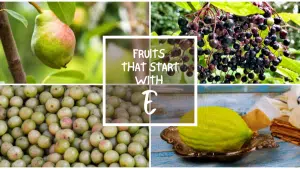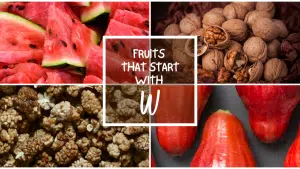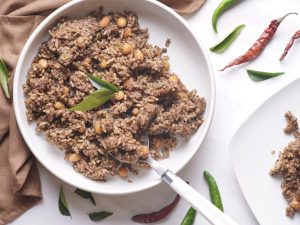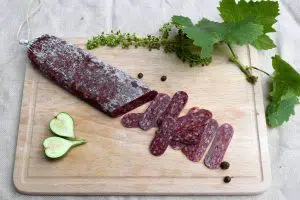All The Fruits That Start With F
Important Note: When you buy through our links, we may earn a commission. As an Amazon Associate we earn from qualifying purchases. Content, pricing, offers and availability are subject to change at any time - more info.
If you are wondering why you need a list of fruits, this is because You should know fruits beginning with the letter f to help you understand a variety of fruits ranging from ones with sour and bitter tastes to the sweet, enjoyable ones. The list of fruits that start with F is endless, including fuji apple, Fairchild tangerine fruit, Florida strangler fig, finger lime, fascell mango, and many others. Here is a list of fruits that start with the letter f.
- Fuji Apple
- Fairchild Tangerine Fruit
- False Mastic Fruit
- Feijoa
- Fig
- Finger Lime
- Fe’i Banana
- Forest Strawberries
- Fox Grape
- Five Flavor Berry
- Florida Cherry
- Fukush Kumquat
- Florentine Citron
- Florida Strangler Fig
- Fascell Mango
- Fazil Mango
- Flatwoods Plum
- Farkleberry
- Fibrous Satinash Fruit
- The Final Letter
Fuji Apple

The scientific name of the fuji apple is Malus pumila. It is the most popular type of apple. It has a sweet natural taste and is crunchy when you bite. Its flavor is juicy and sweet. You can enjoy the fruit fresh or use it as a recipe for unique dishes. You can use Fuji apple to prepare dishes like cake, pie filling, and even salads.
Moreover, it is excellent for baking because it maintains its shape when on heat. Compared to other varieties of apples, the fuji apple lasts longer. They were first created in Fujisaki, Japan but have spread to be popular in America more than in Japan itself. The fruit got its name from where it was first grown, in Fujisaki. Intake of fuji apple has health benefits such as antioxidant, antiproliferative, and antibacterial properties.
Fairchild Tangerine Fruit
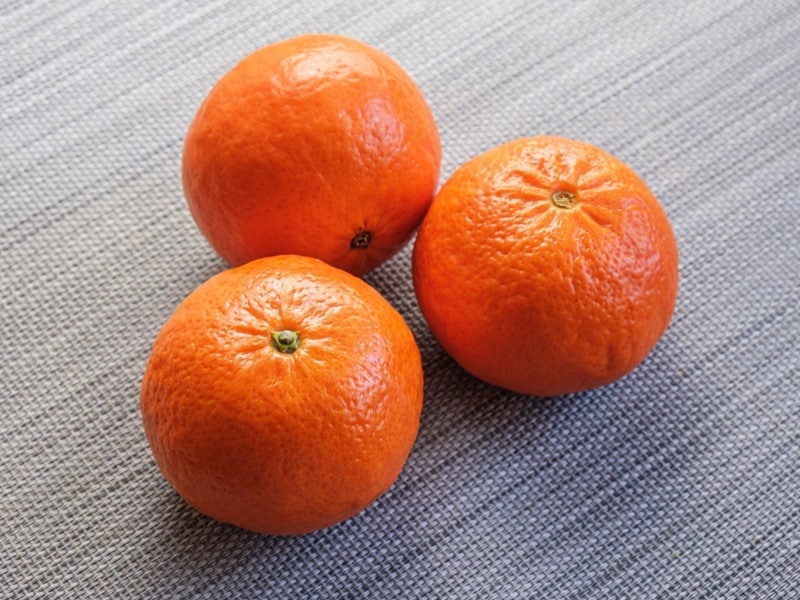
The scientific name of the Fairchild tangerine fruit is Citrus tangerine ‘Fairchild.’ It is common in America. It has a rich citrusy and sweet flavor compared to the other citrus fruits. It has a deep orange color. The Fairchild tangerine fruit is a mixture of Orlando tangelo and clentine mandarin. They are not great for snacking because they are difficult to peel with your hands. The Fairchild tangerine got its name from a port in morocco called tangier. The port played a significant role in exposing the fruit to other parts except for Asia. The fruit contains vitamin c that has several health benefits, such as improving eye and skin health and reducing the risk of heart disease. It is grown for commercial purposes in the united states.
False Mastic Fruit

False mastic fruit’s scientific name is Sideroxylon Foetidissimum. It is also called yellow mastic. False mastic fruit is tiny and has a round shape. It grows on an evergreen tree that fruits quickly and all year round. Its skin has a yellow-orange color, with the inside flesh being white. Despite the fruit being pulpy, it is juicy. The taste of false mastic fruit is bitter, but a few people enjoy the flavor. The fruit’s sap is gummy and sticky that you can enjoy it like gum. The fluid is so sticky that it can make your lips stick together. You can also use false mastic as glue.
Feijoa
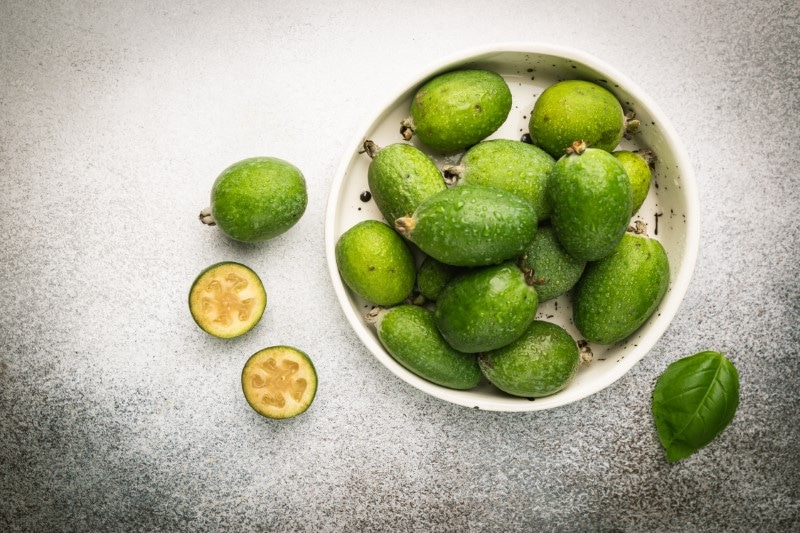
The scientific name of Feijoa is Acca sellowiana. Other names for Feijoa are guavasteen, pineapple guava, Brazilian guava, and fig guava.
It belongs to the family of Myrtaceae. Feijoa is native to countries found in the mountain region, such as Uruguay, Paraguay, Colombia, Argentina, and brazil. The fruit is commonly grown in several countries in South America. Feijoa’s shape and size resemble that of chicken eggs. It is green when it ripens. When ripe, the fruit has a green color on the skin. Its tree grows to a height of about fifteen feet. Feijoa contains a vibrant and robust fragrant smell.
Its taste is juicy and sweet, but hard to pinpoint its actual flavor. The taste has a touch of apples, pineapples, strawberries, guava, quince, and sometimes mint — a sweet and tangy taste. Due to Feijoa having methyl benzoate in the fruit, consumers can have a cool aftertaste. Moreover, it contains nutrients such as fiber, potassium, and vitamin C. You can use this juicy fruit to make smoothies, yogurt, baked goods, and even vodka. The fruit has helped reduce rampant lifestyle diseases like some cancers, heart disease, and type 2 diabetes.
Fig

The scientific name of the fig is Ficus carica. Fig is native from northern India and western turkey. The countries in the middle east. However, currently, they can be easily found in California and Mediterranean countries. The tree of a fig looks like small bushes. It has a juicy and soft fresh texture that is grainy and squishy in a unique way. Its taste is naturally sweet, something close to the taste of honey more than that of a fruit. However, the flavor of the fruit has an underlying taste of the sweetness of a berry. They cannot nourish in places with temperatures lower than 20 degrees F. Fresh fruits perish quickly, but if you dry them, they can last for a few months. Due to the short lifespan of the figs, if you need to purchase them in America, they are best available in roadside stands and farmers’ markets. You can also enjoy the highly versatile flavor of figs in baked foods such as marmalade, cakes, and bread. The fruit is found in the same family as mulberries.
Finger Lime
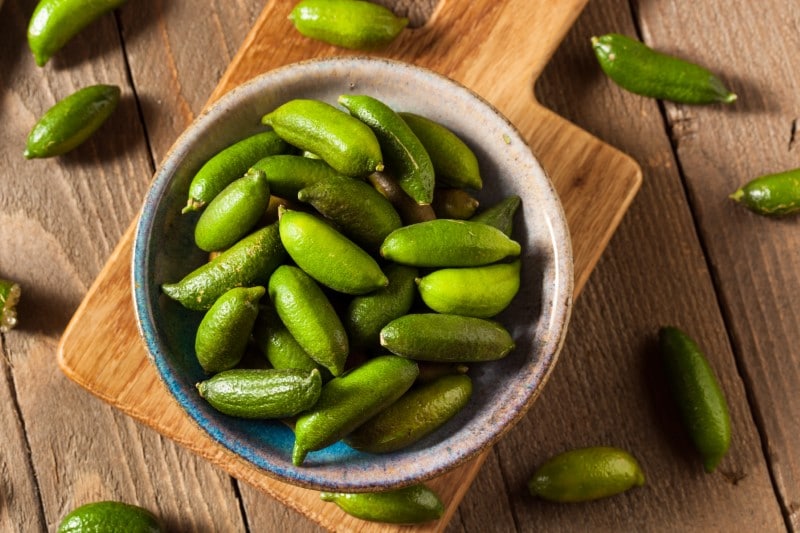
The scientific name of finger lime is citrus australascia, coming from its origin in Australia. It is commonly found in Australia and now in California. The fruit gained its nickname finger from its long and thin shape. Finger lime has the form of a tube about three inches long. Its skin can be of several colors, such as pink or green. At the same time, the inside looks like caviar and can be any of these colors, red, green, yellow, or pink. To eat the finger lime fruit, you squeeze a jelly from its packet. Or cut one end and then press the other end to release several small round pieces that are jelly-like and look like caviar. Finger lime has a taste of citrus tart flavor that is refreshing. When placed in the mouth, the fruit pops and leaves the lime taste on the tongue. It makes a beautiful substitute for lime or lemon. You can use it as an excellent addition to jams, cocktails, and sauces.
It is also called caviar lime. The finger lime is among the most extraordinary fruits and is majorly used to bring flavor to foods such as seafood. Enjoy using the finger lime ingredient in food recipes such as ice cream, cheesecake, and pastries.
The fruit has been discovered to have several health benefits, such as treating stomach discomfort, having antioxidant capacity, and having antifungal activity, which helps treat people with skin diseases.
Fe’i Banana
The scientific name of fei’I banana is Musa Fe’i Group. Fe’s banana is not the usual yellow color of regular bananas. The peel of the fe’I banana is usually orange and red, with the inside having the same color as a pumpkin. Compared to regular bananas, it has a broader and shorter body. Its taste is an infusion of tangy and sweet flavors. You can enjoy fe’I banana raw or use it to make savory dishes. These sweet dishes are made primarily in their native. That is pacific Island. When cooked, it has a starchy and tender texture.
Forest Strawberries

The scientific name of forest strawberry is Fragaria vesca. Forest strawberries are commonly known as wild strawberries, woodland strawberries, alpine, and European strawberries. It typically grows in the areas found on the north part of the equator and is located in the rose family. The fruit looks like strawberries, but it is a bit smaller. They are very safe to consume raw. The size of the forest strawberries makes it difficult for one to enjoy them. The forest strawberries have a juicier and sweeter taste compared to regular strawberries. They are not poisonous. The fruit is rich in nutrients such as potassium and iron, that is helpful to people living with anemia. Unfortunately, it is not easy to get and buy forest strawberries in grocery stores and markets in the united states.
Fox Grape
The scientific name of the fox grape is Vitis labrusca. The other name for fox grapes is slipskin grapes. It gets its name of slipskin grapes since you can quickly get the flesh of the grapes out of their skin. The fox grape is dark purple, close to having black skin. The fox grape has a sour taste compared to the other kinds of grapes. It is a suitable fruit to enjoy both raw or as a cooking ingredient. You can use fox grapes in preparing jelly, jam, and wine. Fox grape has been commonly used in the making of wine. It is widely found in the European and North American areas. The grapes are believed to have health benefits of reducing the risk of chronic diseases such as cardiovascular diseases and cancer and having antioxidant properties.
Five Flavor Berry
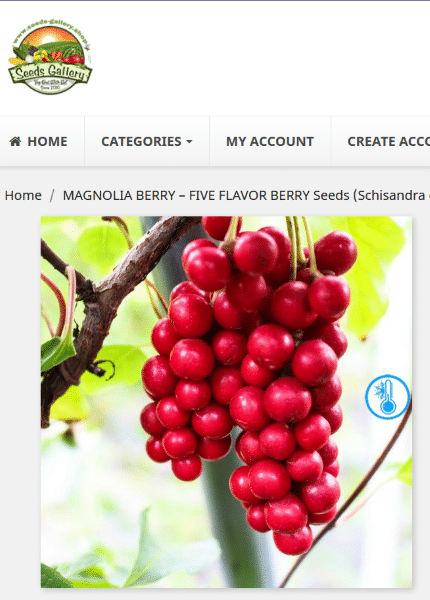
The scientific name of five flavor berry is Schisandra Chinensis. The five flavor berry has a dark color that is reddish-purple. As the fruit’s name suggests, its taste contains five different flavors. It is a mixture of five unique flavors in one fruit such as sour, salty, bitter, pungent, and sweet. It is more enjoyable to consume it dry rather than raw. This is because there can be a chance you get a nasty berry. The fruit’s seeds contain lignin, resulting in many health benefits to an individual. The five flavor berry is known to have the potential to improve human health. It has antidiabetic activities, antiaging factors, and even antiobesity activities.
Florida Cherry
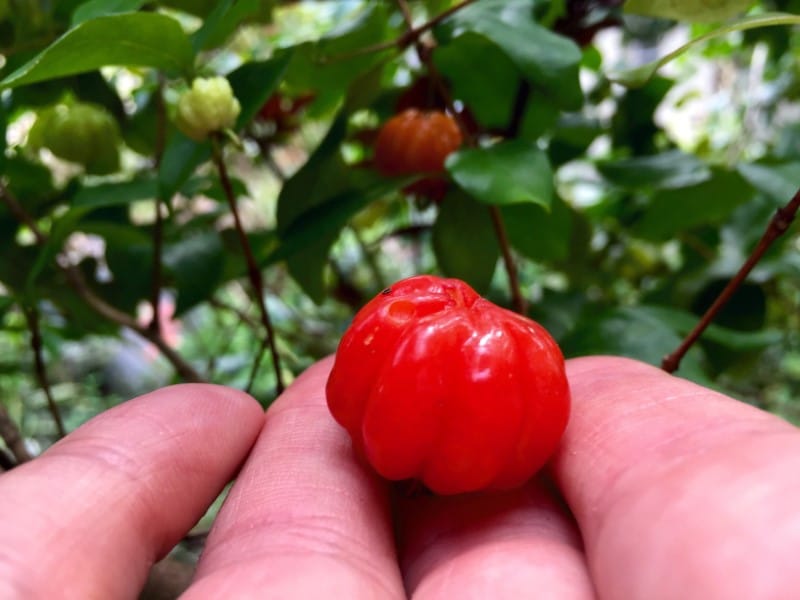
The scientific name of the Florida cherry is Eugenia uniflora. Its other name is Surinam cherry. Florida cherries are tiny and red or orange. The Florida cherry has a shape that is multi-ridged and round at the same time. It looks like a cute little pumpkin. Its skin is smooth and glossy, with a color that ranges from orange to bright red. They have a tangy and sour taste but are still enjoyable. Its tree can also be an excellent choice for landscaping. They will make your lawn look beautiful.
Fukush Kumquat

The scientific name of fukush kumquat is Citrus obovata. Fukush kumquat is a small fruit with a juicy flavor. It has a taste the same as tangerine and an orange combination. When eating, you can eat the whole fruit: the flesh, seeds, and skin. However, eating the seeds is not a must. Fukush kumquat has a sharp, sweet, and tangy taste. The flavor also has a touch of floral and fruity taste. It is used in preparing marmalades, jellies, and the making of salads.
Florentine Citron
The scientific name of Florentine citron is limonimedica ‘Florentina’ Lush. The citrus fruit has an aromatic and fragrant citrus smell that’s very pleasing. The fruit commonly grows naturally or sometimes on a bizzaria tree. Florentine citron has a sour taste. Florentine fruit was named after the region where its cultivation originated. Florentine citron is native to the gardens of the Italian renaissance. It is currently considered a hybrid fruit of citron and lemon.
Florida Strangler Fig
The scientific name of the Florida strangler fig is Ficus aurea. It is popularly called the golden fig. It contains nutrients such as calcium, iron, fiber, and potassium. When ripe, it changes to a golden yellow color from green. It tastes sweet with a flavor of caramel, nuts, and butter infused. Except for its strange name, it is an edible fruit that has been eaten for a long time by Native Americans. Florida strangler fig contains several nutrients such as fiber, calcium, iron, and potassium. You can enjoy the great taste of the fruit without combining it with anything. It can also be used as an ingredient in preparing desserts, cereals, and salads.
Fascell Mango
The scientific name of facell mango is mangifera indica. Fascell mango originated in Florida’s sunny state around the 1930s. The fruit is named after the person who first cultivated the hybrid mango.
The man was called Michael fascell. Thus the name fascell mango. The fruit is oval or heart-shaped and has a beautiful yellow and red color when it ripens. It tastes just like the regular mangoes but without the fibers. Fascell mangoes are sweet and commonly grown for commercial use. The outstanding feature of the fascell mango is its ability to mature while being heart-shaped. Its flesh has a sweet taste.
Fazil Mango
The scientific name of fazil mango is mangifera indica. It is commonly grown in Bangladesh and India. It is a considerably large fruit that can weigh up to one kilogram for every single fruit. When ripe, it is yellow. The fruit has a thin skin; thus, the skin is consumed just like an apple. You can enjoy your fruit raw or use it as an ingredient in delicious recipes. It has a combination of a sweet taste with a hint of sourness. It is usually used to produce pickles, chutney, and jam. The fruit has gained recognition in the markets worldwide, and the number of imports in the united states keeps increasing. The fazil mango is also known for its health benefits, including anti-cancer, anti-inflammatory, and antioxidant properties.
Flatwoods Plum
The scientific name of the Flatwoods plum is Prunus umbellate. It is often found in parts of the southern united states. Flatwoods plum has a round shape and a purple color. Despite Flatwoods plum being a wild fruit, it does not have a sour taste. The fruit is safe and healthy to consume. You can enjoy Flatwoods plum raw or as a part of a recipe for your favorite dish. However, the fruit is believed to be dangerous if you consume the fruit’s leaves and pit in massive amounts. The toxic chemical in Flatwoods plum is known as hydrogen cyanide. Hydrogen cyanide creates bitterness in the fruit you first consume. However, the bitterness eventually fades to a satisfying sweetness. Its taste makes it perfect for producing jam and tarts.
Farkleberry
The scientific name of farkleberry is Vaccinium arboretum. It is also called sparkleberries. Farkleberry grows naturally in the united states, such as Missouri, Texas, Florida, Kansas, Virginia, and Oklahoma. It has a bitter and tart taste. They are unpalatable for humans even though they are non-toxic and edible. They are unpalatable because of their bitterness. Farkleberry can also work as a portion of animal food and fertilizer. The fruit is not commonly grown for commercial purposes. It nourishes in sandy soil. The berries are usually tough to chew and have a range of flavors, from sweet to bitter.
Fibrous Satinash Fruit
The fruit has a feminine color: bright pink and sometimes red. Its flowers are cream in color. The scientific name of fibrous satinash fruit is Syzygium fibrosum. The fibrous satinash fruit is also called banana. It commonly grows in rainforest areas such as new guinea, Indonesia, and Australia. The fruit has a sour taste with a smooth leathery texture. It looks like a fruit that has a protruding tail on the downside. The fruit can be used as an ingredient in producing jelly, jam, and confectionery. It is popularly planted in gardens because of its aesthetic nature and ability to be an attraction for birds.
The Final Letter
The list of these unique fruits will increase your knowledge of the current fruits in the world. Each of the fruits above, starting with the letter f, has a distinct feature that makes it unique. Try these fruits, whether it is feijoas, farlkleberries, Florida cherries, fuji, or forest strawberries, to discover new tastes and delicious recipes you can make using them.
